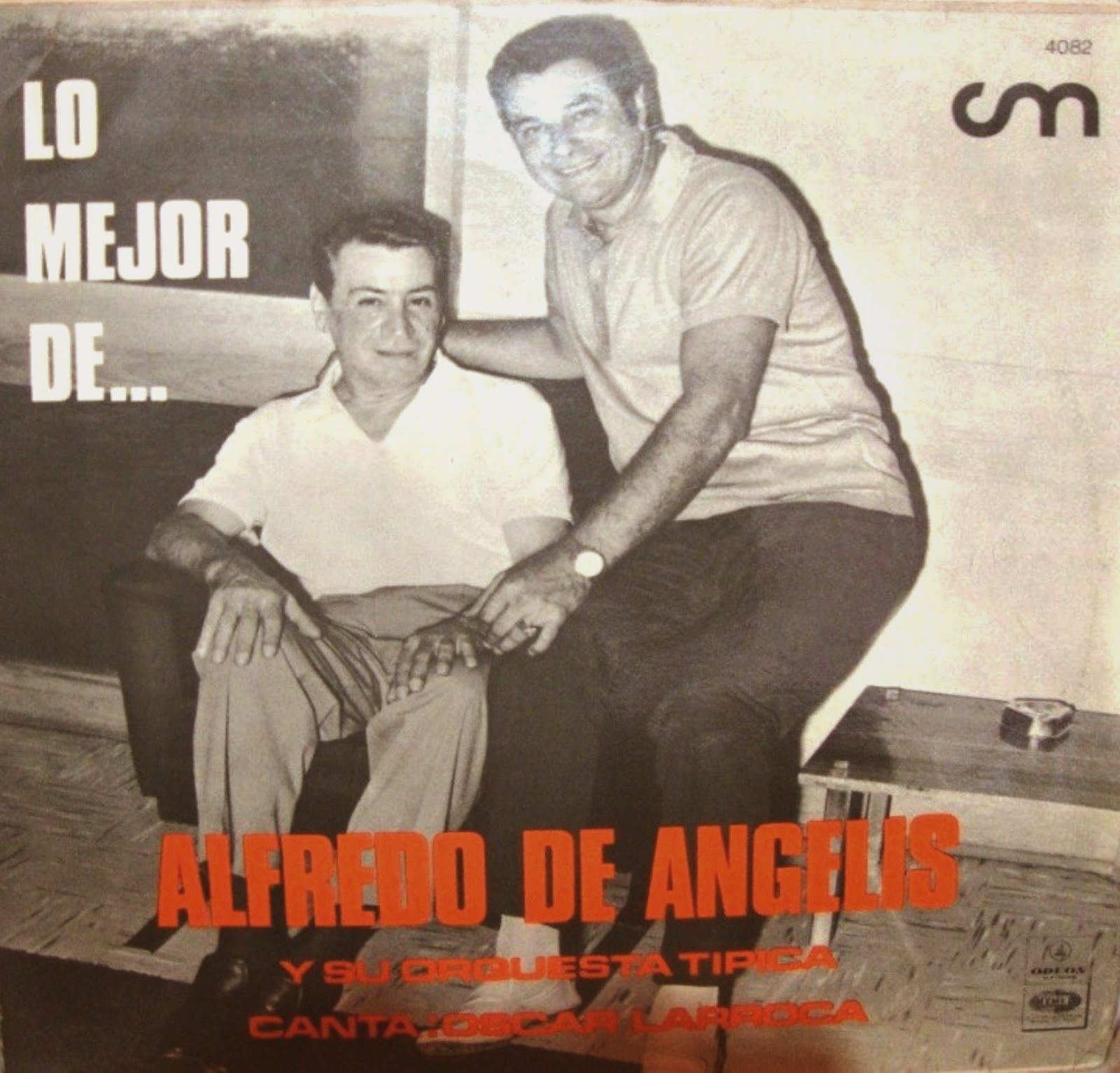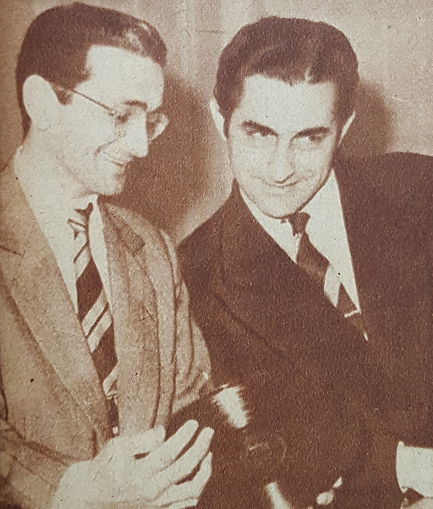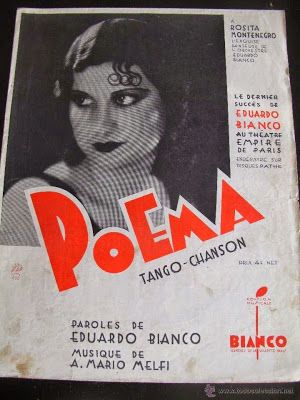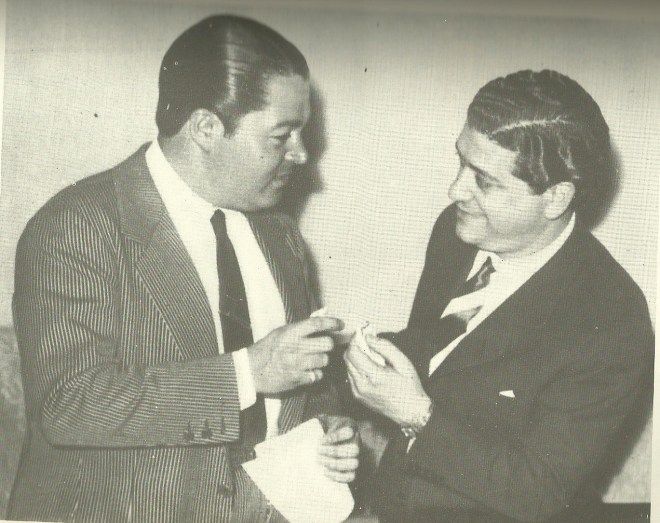“Almagro” by Alfredo de Ángelis y su Orquesta Típica with Oscar Larroca in vocals, 1951.
 Oscar Larroca
Oscar Larroca
Singer
(5 July 1922 – 26 August 1976)
One of the idols of the time, the vocalist Julio Martel, who, with Carlos Dante, had teamed up with the most successful duo of the 40s, split with the Alfredo De Angelis Orchestra. The violinist Víctor Braña, attracted by the color of Larroca’s baritone-like voice, his good intonation, and his diction, plus his good-looking appearance, introduced him to De Angelis, who hired him immediately.
Oscar quickly adapted himself to the style of the orchestra. A good blending with Dante takes place, so a harmonious duo with good intonation is born.
They made their debut on Radio El Mundo at the tango program with the greatest audience, Glostora tango club, on April 1, 1951. Continue reading at www.todotango.com…










